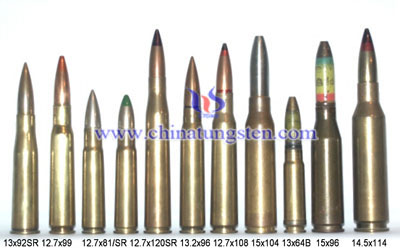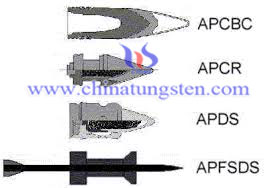
Following the First World War, tank armor was improved in terms of both thickness and quality. To be able to penetrate the armor of the tanks of potential enemies, it became necessary to design guns and shells for this specific purpose. During the thirties and fourties, a large number of new shell types saw combat. The descriptions below will give a brief overview of the main types of shells, explaining the basic designs, the method with which the shells penetrate an armor plate, and in which way they are designed to disable the tank against which they are fired.

The principle of concentrating the kinetic energy of a large-caliber shell in a narrow penetrator is taken to the extreme with the armor piercing, discarding sabot (APDS) shell. Developed during the war, this shell type is similar to the APCR in penetration principle. Rather than fixing the outer shell to the penetrator, the outer shell, or sabot, is discarded from the penetrator immediately upon leaving the muzzle. The penetrator itself is a long, thin rod of a high-density material, such as Tungsten, or, after fission energy became common efter the war, depleted Uranium.
APDS shells offer very good penetration capability, but also suffer from the same issues as APCR shells. APDS also have the disadvantage that the sabot will impact the ground in front of the gun at a relatively high velocity, posing a risk to friendly troops.
Armor Piercing, Capped, Ballistic Cap (APCBC)
This shell type is a combination of the caps of the APC and the APBC shells.
Armor Piercing, Composite, Rigid (APCR)
The APCR round is also more likely to richochet, and the smaller small will cause less damage than a full-caliber shell, especially since the penetrator does not contain an explosive filler. Nevertheless, during the Second World War, it allowed the service life of low-caliber guns designed before the war to be extended.

Tungsten alloy is suitable material for tungsten alloy anti tank ammunition. Chinatungsten Online can provide the product. If you have questions, please feel free to email us:sales@chinatungsten.com또는 전화 : 86 592 5129696.